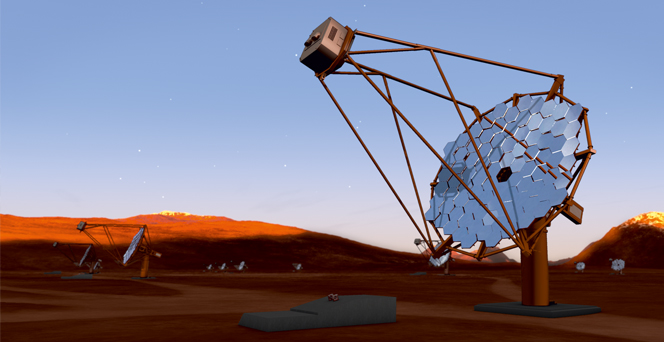URL: https://v1.desy.de/site_www-desy/content/research/facilities__projects/ctao/aufgabenuebersichtsplan_v1_20220131_eng.html/@@siteview
Breadcrumb Navigation

CTAO
Upcoming gamma-ray observatory CTAO
Galaxies that resemble enormous whirlpools, or intergalactic clouds of dust shaped like a horse’s head – the field of astronomy is known for spectacular images. But there are also telescopes that detect light outside the visible spectrum, such as gamma rays. Gamma radiation is produced during cosmic events of tremendous violence, such as supernova explosions. The planned Cherenkov Telescope Array Observatory (CTAO) will detect this high-energy radiation with unprecedented sensitivity. DESY is a major contributor to this large-scale international project.
Gamma rays are the most energetic electromagnetic waves. A gamma quantum can contain many trillions of times more energy than a quantum of visible light. The processes during which this radiation is created in the universe are correspondingly violent. For instance, gamma rays are produced when matter particles are accelerated to incredible energies in the vicinity of black holes, or when a neutron star rotates about its axis at mind-boggling speed. Special-purpose telescopes that detect gamma radiation can provide valuable details about these distant, formidable events.
Gamma-ray observatory of the future
Ground-based gamma-ray telescopes work as follows: When high-energy gamma rays strike the atmosphere of the Earth, they trigger a cascade of particles, which, in turn, generates characteristic flashes of blue light. Huge mirror systems focus this atmospheric light onto very fast cameras. The data can then be used to reconstruct where a gamma quantum came from and how much energy it contained.
Today’s gamma-ray telescope systems consist of at most five individual telescopes. Conversely, the CTAO, which will be the first ground-based gamma-ray observatory of its kind, is designed to have more than 60 individual telescopes. To be able to view the entire sky, two locations are planned: one in the northern hemisphere with 13 telescopes distributed over 0.5 square kilometres and one in the southern hemisphere with 51 telescopes on about three square kilometres. There are two additional observatory sites, the headquarters in Bologna, Italy, and the Science Data Management Centre (SDMC) at DESY in Zeuthen. Besides its role as host of one of the four observatory sites, DESY is a major CTAO contributor with responsibilities in the design and construction of the medium-sized telescopes (MSTs) and of cameras for the small-sized telescopes (SSTs) as well as in software and computing.
The sky in the light of gamma radiation
The universe is full of natural particle accelerators, such as supernova explosions, binary star systems or active galactic nuclei. The CTAO will observe thousands of these cosmic accelerators with unprecedented sensitivity. This will allow researchers to decode what mechanisms in cosmic sources millions of light years away are capable of accelerating particles to create such high-energy radiation. The CTAO will make it possible to study the spatial structure and temporal changes of a large number of sources in detail and so to obtain a complete astronomical picture over the entire electromagnetic spectrum.
Enigmatic “dark” gamma-ray sources that cannot be seen in any other spectral region could offer valuable information on the origin of cosmic rays. In addition, the CTAO may provide clues in the search for signs of dark matter.


